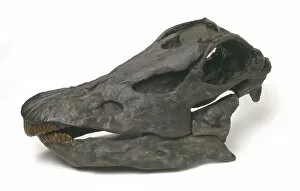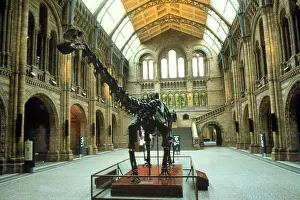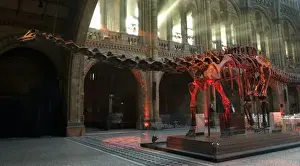Diplodocus Carnegiei Collection
"Diplodocus carnegiei: A Majestic Giant in the Heart of The Natural History Museum
All Professionally Made to Order for Quick Shipping
"Diplodocus carnegiei: A Majestic Giant in the Heart of The Natural History Museum, London" Step into the Central Hall of The Natural History Museum and prepare to be awestruck by the towering presence of Diplodocus carnegiei. This magnificent dinosaur, with its long neck and tail, is a true marvel that captivates visitors from around the world. As you gaze upon its fossil skull C016 / 4977, it's hard not to feel a sense of wonder at the sheer size and power this creature once possessed. Diplodocus carnegiei, named after Andrew Carnegie who funded its excavation in Wyoming back in 1899, stands as an iconic symbol of prehistoric life. The grandeur is perfectly showcased within the impressive architecture of The Natural History Museum. Its skeletal structure stretches across the Central Hall like a guardian from another era. Visitors can't help but be transported back millions of years as they stand beneath its colossal frame. This beloved exhibit has become synonymous with The Natural History Museum itself. It serves as a reminder that our planet's history is filled with extraordinary creatures like Diplodocus carnegiei who roamed these lands long before us. So next time you find yourself wandering through The Central Hall or exploring the Waterhouse Building, make sure to pay homage to Diplodocus carnegiei – an enduring symbol of curiosity and discovery at The Natural History Museum, London.











